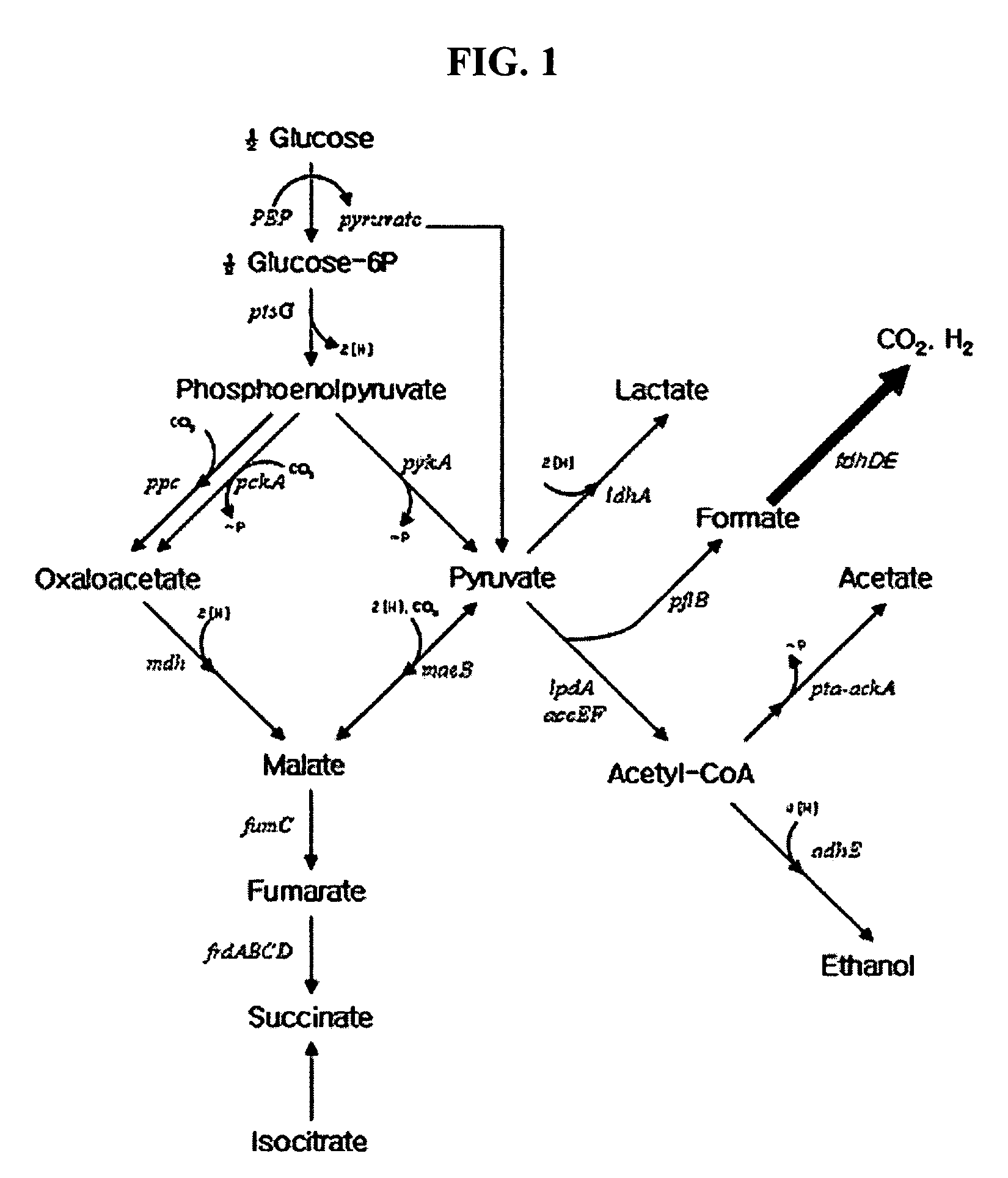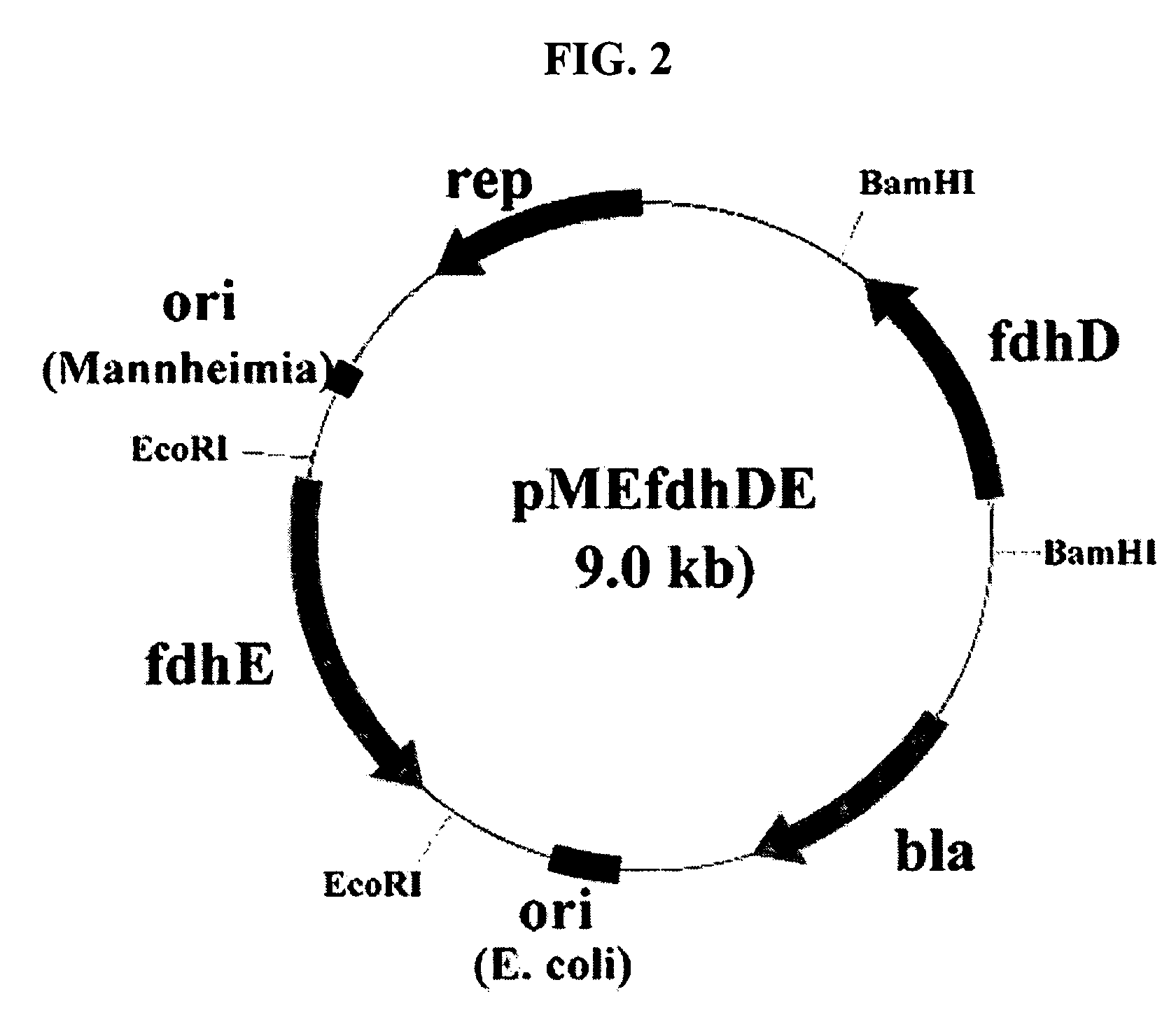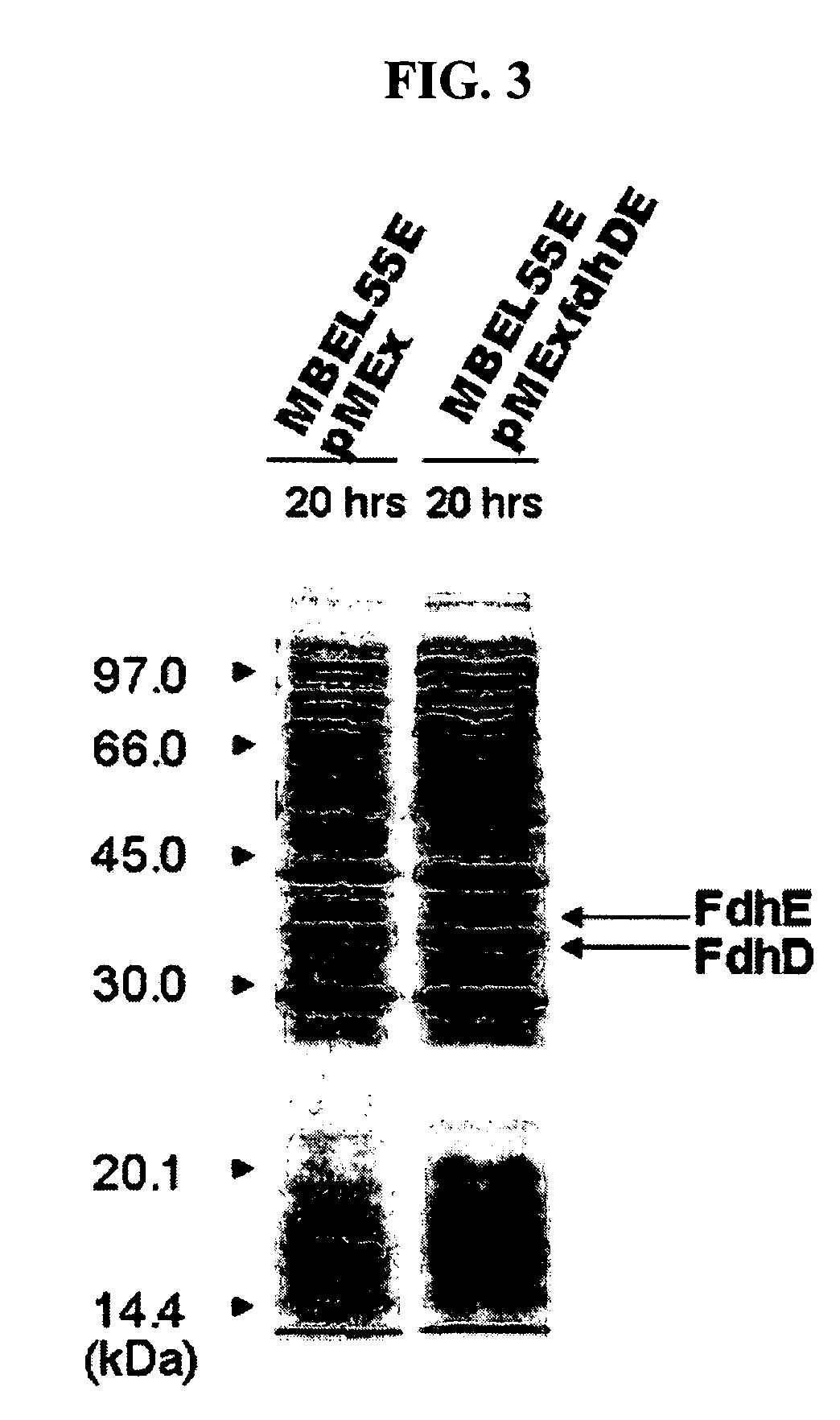Gene encoding formate dehydrogenases D & E and method for preparing succinic acid using the same
a technology of formate dehydrogenase and gene encoding, which is applied in the field of new genes encoding formate dehydrogenase d & e and the field of method for preparing succinic acid using the same, can solve the problems of large amount of harmful solid waste discharge, high cost of separation and purification of succinic acid, and limitation that they use fossil raw materials as basic materials, etc., to achieve the effect of reducing the accumulation of forma
- Summary
- Abstract
- Description
- Claims
- Application Information
AI Technical Summary
Benefits of technology
Problems solved by technology
Method used
Image
Examples
example 1
Preparation of Mannheimia / E. coli Shuttle and Expression Vector pMEx
[0030]Mannheimia / E. coli shuttle vector pMEx was prepared from pMVSCS1 reported to be isolated from Mannheimia (Kehrenberg et al., J. Antimicrob. Chemother., 49:383, 2002) and E. coli expression vector pKK223-3 (Amersham Pharmacia Biotech). For this purpose, pKK223-3 was partially digested with BamHI and AccI to collect a 2.7 kb fragment containing pBR322 ori and an ampicillin-resistant gene, and the single strand portions are filled with T4 DNA polymerase to make blunt ends. The blunt ends are ligated to prepare pKKD (2.7 kb). pMVSCS1 (5.6 kb) was digested with XhoII, and ligated with pKKD digested with restriction enzyme BamHI to prepare fusion vector pMVD (8.3 kb). The pMVD was digested with NcoI, and a 5.9 kb fragment was religated to construct Mannheimia / E. coli shuttle vector pME. The pME was digested with BamHI and ClaI, and a promoter and a transcription termination sequence of Mannheimia pckA gene (Hong et ...
example 2
Identification of Novel Genes (fdhD and fdhE) Derived from Mannheimia succiniciproducens MBEL55E and Preparation of a Recombinant Plasmid Introduced with fdhDE Genes
[0031]The fdhD and fdhE genes having SEQ ID NOs: 5 and 6, which encodes formate dehydragenase D & E derived from Mirmheimia succiniciproducens MBEL55E(KCTC 0769BP) were cloned, including a promoter and a transcription termination sequence, respectively.
[0032]For this purpose, the chromosome of Mannheimia succiniciproducens MBEL55E as a template was subjected to PCR with primers of SEQ ID NOs: 1 and 2 for fdhD and primers of SEQ ID NOs: 3 and 4 for fdhE under conditions shown in Table 1 below. The resulting fdhD andfdhE genes were amplified. fdhD was digested with restriction enzyme BamHI and ligated to Mannheimia / E. coli shuttle vector pMEx digested with the same restriction enzyme to construct plasmid pMExfdhD. The pMExfdhD was digested with EcoRi and ligated to fdhE digested with the same restriction enzyme to construc...
example 3
Production of Succinic Acid by Use of Transformed Mannheimia
[0038]The recombinant plasmid pMExfdhDE constructed in Example 2 was transformed into Mannheimia succiniciproducens MBEL55E by electroporation to prepare MBEL55EpMExfdhDE. Also, pMEx was introduced into Mannheimia succiniciproducens MBEL55E, to prepare MBEL55EpMEx.
[0039]Each of the prepared recombinant strains was inoculated in 10 ml of a complex medium containing 9 g / l of glucose and cultured in an anaerobic condition at 39° C. for 16 hours. Each of the cultured strains was transferred in 250 ml of a complex medium containing 9 g / l of glucose and further cultured in the medium at 39° C. At this time, 100 μg / l of ampicillin as an antibiotic was added. The fermentation of each of the strains was performed by inoculating 250 ml of the Mannheimia culture broth in 2.5 L of a complex medium, and the fermentation conditions were as follows: initial glucose concentration: 20 g / l, pH: 6.8, and culture temperature: 39° C. For the a...
PUM
| Property | Measurement | Unit |
|---|---|---|
| temperature | aaaaa | aaaaa |
| concentration | aaaaa | aaaaa |
| pH | aaaaa | aaaaa |
Abstract
Description
Claims
Application Information
 Login to View More
Login to View More - R&D
- Intellectual Property
- Life Sciences
- Materials
- Tech Scout
- Unparalleled Data Quality
- Higher Quality Content
- 60% Fewer Hallucinations
Browse by: Latest US Patents, China's latest patents, Technical Efficacy Thesaurus, Application Domain, Technology Topic, Popular Technical Reports.
© 2025 PatSnap. All rights reserved.Legal|Privacy policy|Modern Slavery Act Transparency Statement|Sitemap|About US| Contact US: help@patsnap.com



